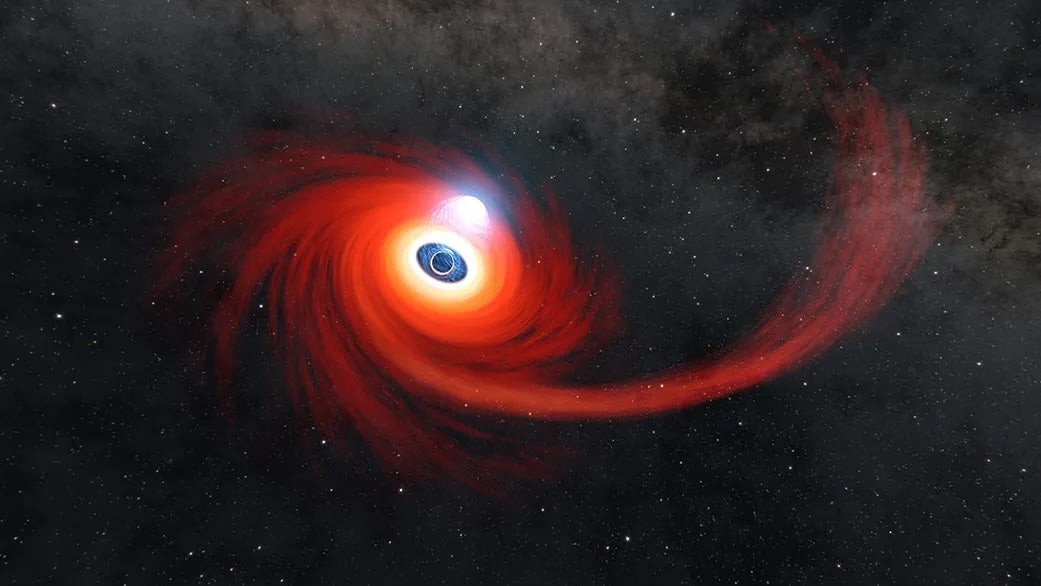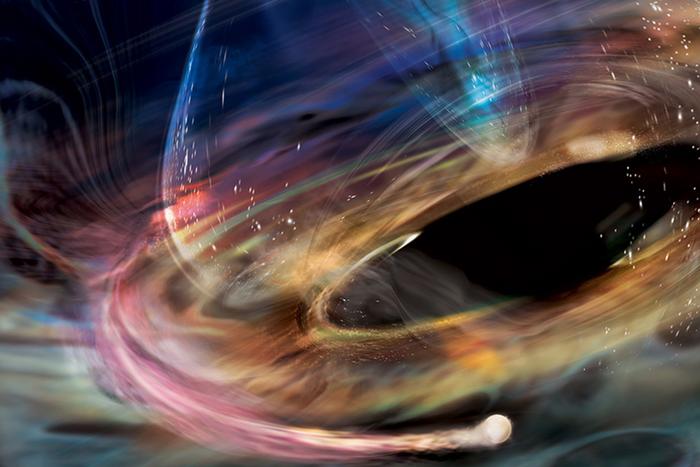Scientists spot a massive black hole taking a 'nap' after overeating
Share:
There's nothing quite like a cheeky snooze after a large, indulgent meal. And it turns out we're not alone – as a massive black hole has been spotted taking a 'nap' after overeating. An international team of astronomers, led by the University of Cambridge, used the James Webb Space Telescope to detect a black hole in the early universe, just 800 million years after the Big Bang.
![[There's nothing quite like a cheeky snooze after a large, indulgent meal. And it turns out we're not alone – as a massive black hole has been spotted taking a 'nap' after overeating (stock image)]](https://i.dailymail.co.uk/1s/2024/12/18/12/93272635-14205671-There_s_nothing_quite_like_a_cheeky_snooze_after_a_large_indulge-m-40_1734525419543.jpg)
The black hole is huge – 400 million times the mass of our Sun – making it one of the most massive black holes discovered by Webb at this point in the universe's development. It is so enormous that it makes up roughly 40 per cent of the total mass of its host galaxy.
In comparison, most black holes in the local universe are roughly 0.1 per cent of their host galaxy mass. However, despite its gigantic size, this black hole is eating, or accreting, the gas it needs to grow at a very low rate – about 100 times below its theoretical maximum limit – making it essentially dormant.
And this discovery has challenged existing models of how black holes develop. An international team of astronomers, led by the University of Cambridge, used the James Webb Space Telescope to detect a black hole in the early universe, just 800 million years after the Big Bang.
There's nothing quite like a cheeky snooze after a large, indulgent meal. And it turns out we're not alone – as a massive black hole has been spotted taking a 'nap' after overeating (stock image). The researchers say the most likely scenario is that black holes go through short periods of ultra-fast growth, followed by long periods of dormancy.






















